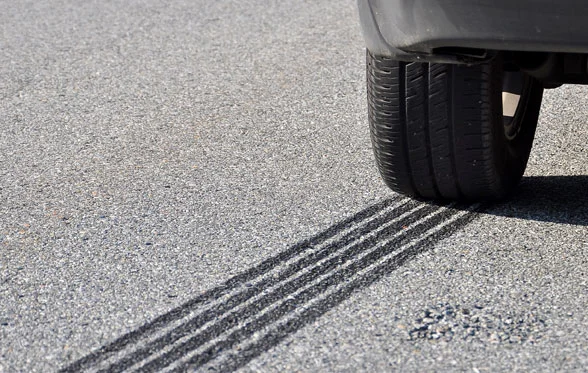On December 14, 2016, the National Highway Traffic Safety Administration (NHTSA) published in the Federal Register (Vol. 81, Number 240; Docket No. NHTSA-2016-0125) a Final Rule (FR) establishing Federal Motor Vehicle Safety Standard (FMVSS) 141 - Minimum Sound Requirements for Hybrid and Electric Vehicles. This Standard will help to ensure that blind, visually impaired, and other pedestrians are able to detect and recognize nearby hybrid (HVs) and electric vehicles (EVs). This FMVSS applies to HVs that are capable of propulsion in any forward or reverse gear without the vehicle's internal combustion engine (ICE) operating and EV passenger cars and Light Truck Vehicles (LTVs) with a gross vehicle weight rating (GVWR) of 4,536 kg (10,000 lbs.) or less. The rulemaking also applies to Low Speed Vehicles (LSVs). This FR satisfies mandates included in the Pedestrian Safety Enhancement Act (PSEA) of 2010.
Both blind and sighted pedestrians have greater difficulty detecting HVs and EVs at low speeds than they do detecting vehicles with ICE engines because HVs and EVs produce measurably less sound at those speeds. At higher speeds tire and wind noise are the primary contributors to a vehicle's noise output, so the sounds produced by HVs and EVs and ICE powered vehicles are similar. HVs with gross vehicle weight rating (GVWR) of 4,536 kg (10,000 lbs.) or less are 1.18 times more likely than an ICE vehicle to be involved in a collision with a pedestrian and 1.51 times more likely to be involved in a collision with a pedal cyclist.
NHTSA published a Notice of Proposed Rulemaking (NPRM) on January 14, 2013 which offered three alternative means for establishing the requirements. The FR adopts the Agency 's preferred method of using a psychoacoustic model with elements designed to enhance detection and to aid pedestrians in recognizing the 'alert sound ' as coming from a motor vehicle to establish minimum requirements for vehicle emitted sound. The PSEA defines 'alert sound' as a vehicle-emitted sound that enables pedestrians to discern the presence, direction, location, and operation of the vehicle.
Other requirements contained in the FR include:
- Applies to four-wheeled HVs and EVs 4,536 kg GVWR or less (NPRM did not limit GVWR and included electric motorcycles)
- Number of one-third octave band minimum sound requirements can be either two or four (NPRM specified eight)
- Sound must be emitted when the vehicle is stationary with the vehicle propulsion system activated, but does not apply to vehicles that are parked (vehicle's gear selector is in the "park" position or the parking brake is applied -- HVs and EVs with manual transmissions) with the propulsion system activated
- HVs and EVs must emit minimum sound levels while in reverse and the vehicle in forward motion up to 30 km/h
- Vehicle-emitted sound to increase in sound pressure level by a specified amount as the vehicle's speed increases. (NPRM specified fundamental frequency of the sound emitted must vary as the vehicle changes speed by 1% per km/h for speeds between 0 and 30 km/h ["pitch shifting"])
- Compliance testing to be conducted outdoors
The effective date for the FR is February 13, 2017. Compliance phase-in starts September 1, 2018 and compliance must be 100% by September 1, 2019. Petitions for Reconsideration of this FR must be received by January 30, 2017.
